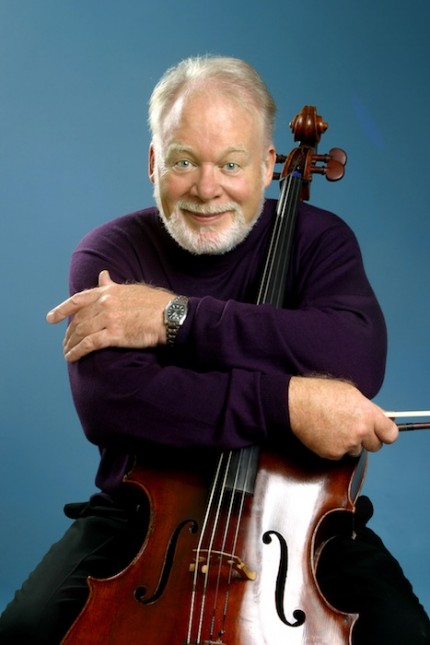Lynn Harrell joins Elgin Symphony to open season in style

The Elgin Symphony Orchestra kicked off its 2015-16 season with two performances at the Hemmens Cultural Center over the weekend. Cellist Lynn Harrell headlined the concerts under music director Andrew Grams, and Sunday’s performance drew a packed house and showcased fine collaboration and laudable orchestral playing.
The concert opened with Charles Ives’ early Variations on “America,” the first installment of a programming initiative sponsored in part by a grant from the American Music Project. This season-long series finds the ESO performing at least one piece by an American composer on all of their 2015-16 programs (though the April program is a bit of a stretch with Dvorak’s “New World” Symphony as the featured “American” work). Grams led William Schuman’s familiar orchestration of Ives’ original for organ in a crisp, snappy rendition that underscored the idiosyncrasies of the composer’s style, especially in the strident bitonal sections.
Harrell joined Grams and the orchestra for Tchaikovsky’s Variations on a Rococo Theme, the Mozartean sensibilities of which could not have been in greater contrast to those of Ives. Harrell played the opening theme with an understated elegance, but some technical solo passages were troubled by intonation problems, especially in the cello’s highest range. The veteran cellist excelled in Tchaikovsky’s lyrical writing, however, playing with a supple tone of vocal delicacy. Harrell’s sure-footed yet ethereal harmonics at the close of the aria-like penultimate variation were a highlight of the afternoon.
This was followed by something of a scheduled encore in the form of Tchaikovsky’s own transcription for cello and string orchestra of the Andante cantabile from his String Quartet No. 1. Here Harrell’s playing remained eloquent as he artfully spun the movement’s folksong theme. Especially impressive was the warm bed of flexible sound Grams (himself a Juilliard-trained violinist) elicited from the ESO strings, which allowed Harrell free reign to manipulate colors and dynamics.
Brahms’ Symphony No. 1 made up the second half. Grams imbued the first movement’s sostenuto introduction with a tenacious gravitas, and the ensuing allegro abounded with incisive sturm und drang. The maestro fluidly led the orchestra through the transitions of mood in the Andante sostenuto, the tender woodwind utterances ebbing and flowing, and concluding with the shimmering playing of concertmaster Isabella Lippi. Grams achieved similar success in the third movement, the graceful, boisterous, and majestic sections of which unfolded with typical Brahmsian ingenuity.
It was in the finale that Grams’ serious mettle as a conductor was most on display. He steadfastly held the soft opening of the introduction’s pizzicato buildup before letting the dynamic grow in the ESO strings’ taut ensemble; likewise in the famous main theme, he emphasized the descending viola accompaniment, in both cases making the familiar sound fresh. The orchestral timbre throughout had a robust, earthy quality, which erupted in a visceral delivery of the work’s rousing coda.
Lynn Harrell began his career being appointed principal cello of the Cleveland Orchestra at age 20 by George Szell. It was a touching sight to notice that Harrell had unobtrusively joined the back stands of the Elgin Symphony cellos when he rose with the section to share in the applause for the Brahms performance.
Andrew Grams and the Elgin Symphony Orchestra will perform John Adams’ Tromba Lontana, the Chausson Poème featuring concertmaster Isabella Lippi, Berlioz’s Rêverie et Caprice, and Sibelius’ Symphony No. 2 November 21 and 22 at the Hemmens Cultural Center. elginsymphony.org
Posted in Performances




